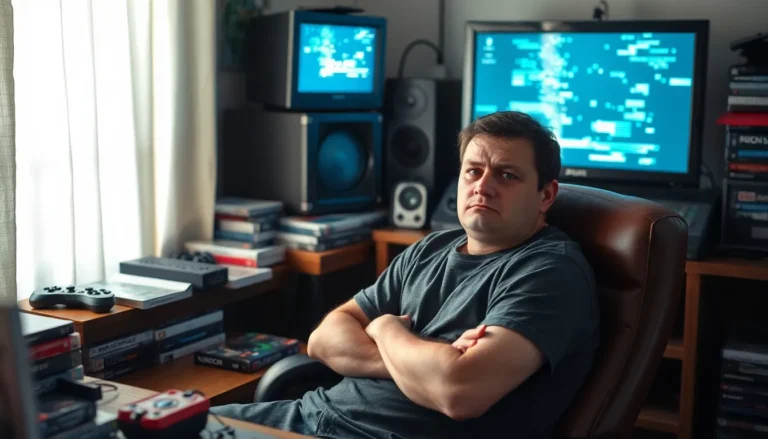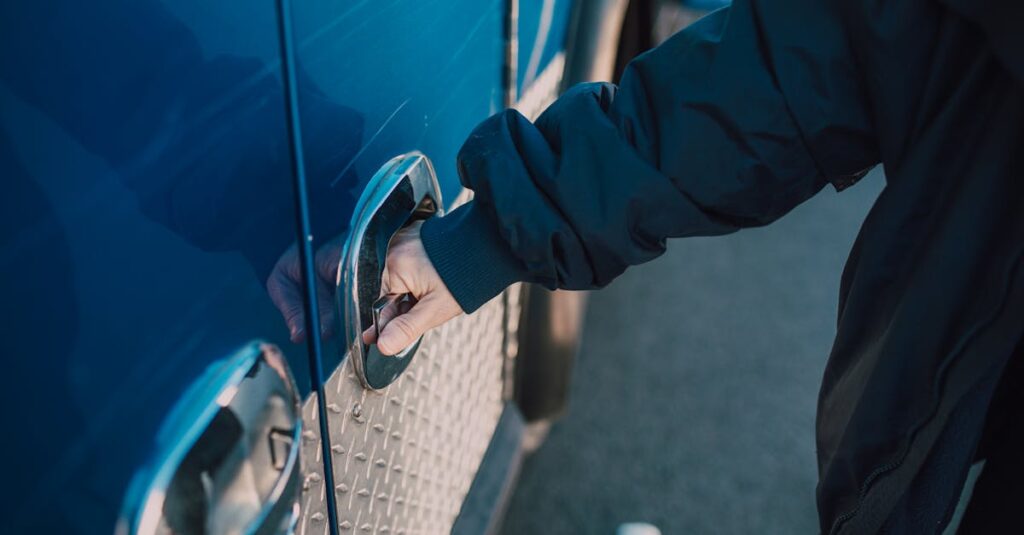Table of Contents
TogglePicture this: you’re in a meeting, trying to look composed, but your iPhone’s screen is glaring at you like it’s auditioning for a role in a horror movie. The auto lock feature, your trusty sidekick in saving battery life and privacy, has decided to take an unexpected vacation. Frustrating, right?
Common Reasons For Auto Lock Issues
Auto lock issues on an iPhone can stem from several common factors. Identifying these factors helps resolve the problem quickly.
Software Glitches
Software glitches often disrupt the auto lock feature. They might arise after a recent update or app installation. Restarting the iPhone can resolve minor glitches. Users can also check for pending updates in Settings. Installing the latest iOS version can fix bugs. If problems persist, resetting settings may help restore functionality.
Settings Misconfiguration
Settings misconfiguration frequently causes the auto lock to malfunction. Users should navigate to Display & Brightness in Settings. Here, ensure the Auto-Lock feature is set to the desired time interval. Selecting “Never” disables auto lock entirely. In addition, check the guided access feature, as it can override auto lock settings when enabled. Users can also examine third-party apps that modify screen settings.
Troubleshooting Steps
Tech issues can be frustrating, especially when they disrupt daily activities. Follow these steps to resolve the auto lock problem on an iPhone.
Restarting Your iPhone
Restarting an iPhone often resolves temporary glitches. To start, press and hold the side button until the power off slider appears. After that, drag the slider to turn off the device. Waiting a few moments before turning it back on can help clear out any lingering issues. Once the iPhone restarts, check if the auto lock feature works as expected. If the problem persists, consider trying additional troubleshooting methods.
Checking Auto Lock Settings
Auto lock settings require proper configuration. Access the Display & Brightness menu under the Settings app. Next, locate the Auto-Lock option and verify its time setting. Options typically range from 30 seconds to 5 minutes. If it’s set to Never, the feature won’t activate. Changing this setting to a shorter interval might resolve the issue. Ensure no third-party apps or accessibility features override these settings, as they can interfere with auto lock functionality.
Hardware Considerations
Hardware issues can significantly affect the iPhone’s auto lock functionality. Users should examine their devices for any physical defects.
Damage to the Power Button
Damage to the power button can prevent the auto lock from engaging properly. If this button is stuck or non-responsive, users may encounter difficulties in locking the screen. Physical wear can lead to malfunctioning, impacting overall device performance. Inspecting for dust or debris accumulation around the button may help. Cleaning the area gently can ensure it functions as intended. Testing the button by pressing it multiple times is advisable to assess its responsiveness.
Impact of Third-Party Accessories
Third-party accessories can also interfere with the auto lock feature. Some cases or screen protectors might obstruct sensors, affecting their ability to detect when the phone should auto lock. Investigating whether any recently added accessories are the root cause is important. Removing these accessories temporarily can help identify potential problems. Additionally, certain Bluetooth devices linked to the iPhone might alter its functionality, leading to unexpected auto lock behaviors. Disconnecting any paired devices can assist in troubleshooting these issues effectively.
When To Seek Professional Help
When troubleshooting efforts fail, it’s time to consider professional assistance. Persistent auto lock issues might indicate deeper underlying problems. Hardware defects often require expert evaluation, especially when the power button exhibits visible damage.
Consulting a technician becomes necessary if simple fixes don’t yield results. Device diagnostics conducted by professionals can pinpoint specific malfunctions that users may overlook. Specialists possess the tools and experience to handle intricate internal repairs.
In situations where third-party accessories interfere, it’s advisable to seek expert advice before continuing use. Some accessories may not work well with specific iPhone models, causing unexpected behavior. Professionals can recommend compatible products that won’t disrupt functionality.
Additionally, software damage following an update might require professional intervention. Generic troubleshooting steps can resolve minor issues, but complex software failures often need advanced tools only available to repair centers. They can restore the operating system and ensure proper functionality.
If repeated consultations with customer support prove unsatisfactory, taking the device into a repair shop for inspection can provide resolution. Authorized service providers offer reassurance, using genuine parts and expertise.
Seeking professional help helps avoid potential risks of self-repair or further damage. Repair experiences often lead to valuable insights about device maintenance and longevity. Ultimately, opting for an expert ensures the optimal performance of the iPhone’s features, including auto lock functionality.
Troubleshooting an iPhone’s auto lock feature can be a straightforward process if users follow the right steps. By checking settings and ensuring no third-party apps interfere, many common issues can be resolved quickly. If problems persist after trying basic fixes like restarting the device or adjusting settings, it may indicate a deeper issue that requires professional assistance. Inspecting hardware components and considering accessory compatibility can also play a crucial role in restoring functionality. Addressing these problems promptly not only enhances user experience but also ensures the iPhone operates efficiently.







